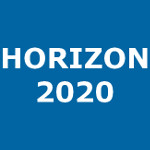Unraveling the impact of laser refractive surgery on corneal ectasia: an in silico study
Fantaci, Benedetta (Universidad de Zaragoza) ; Rodriguez Matas, José Félix ; Squartecchia, Vittoria ; Vavassori, Lucia ; Calvo, Begoña (Universidad de Zaragoza)
Resumen: IntroductionLaser refractive surgeries are a safe option for low-to-moderate refractive corrections, providing excellent visual outcomes. Over the years, various procedures have been introduced into clinical practice, but the most performed today remain Photorefractive Keratectomy (PRK), Laser In-Situ Keratomileusis (LASIK), and Small Incision Lenticule Extraction (SMILE). Although laser refractive treatments are considered safe, clinicians have focused on the risk of post-surgical ectasia, a rare but serious complication. Ectasia is characterized by progressive corneal thinning and steepening, leading to vision distortion, irregular astigmatism, and in some cases, a reduction of visual acuity. It is still debated whether laser refractive surgeries can cause ectasia as an iatrogenic condition or merely accelerate the progression of an underlying corneal pathology, not detected during pre-surgical screening. The proposed work investigates the relationship among three laser refractive surgeries (PRK, LASIK and SMILE), currently performed in clinical practice, and ectasia onset and progression by means of an in silico analysis.MethodsAn average 3D finite-element corneal model is developed and a pathological area, characterized by reduced stiffness of varying severity grades, is defined to analyze its influence on ectasia development and progression in the pre-surgical state. Three laser treatments (PRK, LASIK and SMILE) are simulated on healthy and pathological models. Pre- and post-surgical conditions are compared to check whether any procedure worsens the pre-surgical pathological state. The optomechanical effect of each procedure on the cornea is analyzed at both healthy and pathological conditions and compared to establish which refractive procedure mostly affects corneal structure.Results and discussionWhile the three refractive procedures showed different behaviors in terms of mechanical changes affecting the cornea, from an optical perspective, as the pathology severity worsened, none of the surgeries caused a worsening in the cone’s severity with respect to pre-surgical pathological conditions. This result suggests that surgeries may have a limited role in causing post-surgical ectasia, as it seems more plausible that they accelerate the progression of an underlying pathological condition. Among the three procedures, PRK was found to be the least invasive treatment from a mechanical perspective, while SMILE showed the greatest impact on the posterior surface, suggesting a potential long-term risk for ectasia progression.
Idioma: Inglés
DOI: 10.3389/fbioe.2025.1548539
Año: 2025
Publicado en: Frontiers in Bioengineering and Biotechnology 13 (2025), 1548539 [16 pp.]
ISSN: 2296-4185
Financiación: info:eu-repo/grantAgreement/ES/DGA/T24-23R
Financiación: info:eu-repo/grantAgreement/EC/H2020/956720/EU/Opto-Biomechanical Eye Research Network/OBERON
Financiación: info:eu-repo/grantAgreement/ES/UZ/ICTS NANBIOSIS-CIBER-BBN
Tipo y forma: Artículo (Versión definitiva)
Área (Departamento): Área Mec.Med.Cont. y Teor.Est. (Dpto. Ingeniería Mecánica)
 Debe reconocer adecuadamente la autoría, proporcionar un enlace a la licencia e indicar si se han realizado cambios. Puede hacerlo de cualquier manera razonable, pero no de una manera que sugiera que tiene el apoyo del licenciador o lo recibe por el uso que hace.
Debe reconocer adecuadamente la autoría, proporcionar un enlace a la licencia e indicar si se han realizado cambios. Puede hacerlo de cualquier manera razonable, pero no de una manera que sugiera que tiene el apoyo del licenciador o lo recibe por el uso que hace.
Exportado de SIDERAL (2025-10-17-14:22:19)
Visitas y descargas
Idioma: Inglés
DOI: 10.3389/fbioe.2025.1548539
Año: 2025
Publicado en: Frontiers in Bioengineering and Biotechnology 13 (2025), 1548539 [16 pp.]
ISSN: 2296-4185
Financiación: info:eu-repo/grantAgreement/ES/DGA/T24-23R
Financiación: info:eu-repo/grantAgreement/EC/H2020/956720/EU/Opto-Biomechanical Eye Research Network/OBERON
Financiación: info:eu-repo/grantAgreement/ES/UZ/ICTS NANBIOSIS-CIBER-BBN
Tipo y forma: Artículo (Versión definitiva)
Área (Departamento): Área Mec.Med.Cont. y Teor.Est. (Dpto. Ingeniería Mecánica)
Exportado de SIDERAL (2025-10-17-14:22:19)
Enlace permanente:
Visitas y descargas
Este artículo se encuentra en las siguientes colecciones:
Artículos > Artículos por área > Mec. de Medios Contínuos y Teor. de Estructuras
Registro creado el 2025-04-03, última modificación el 2025-10-17
